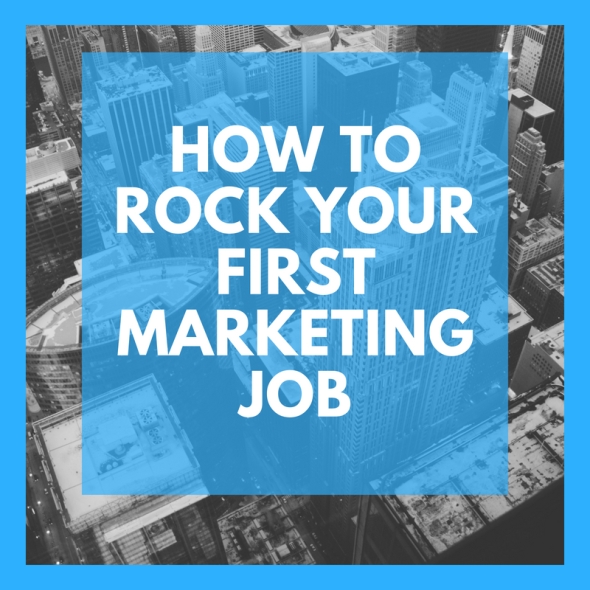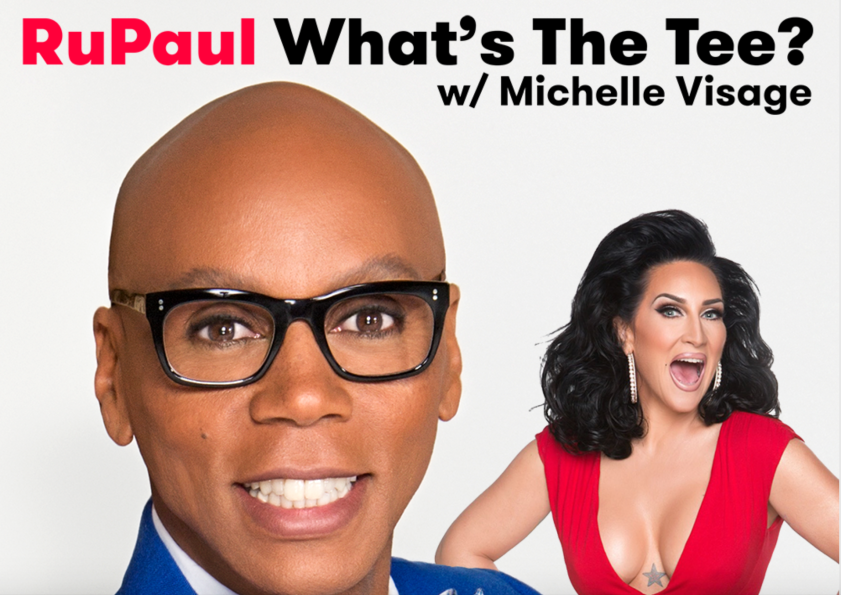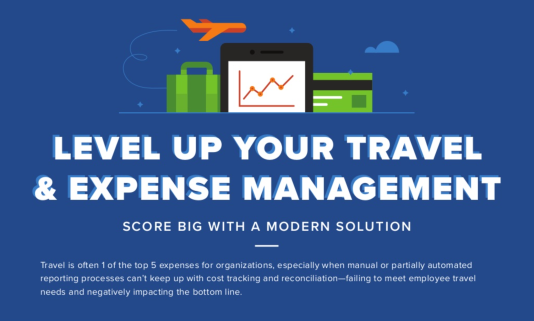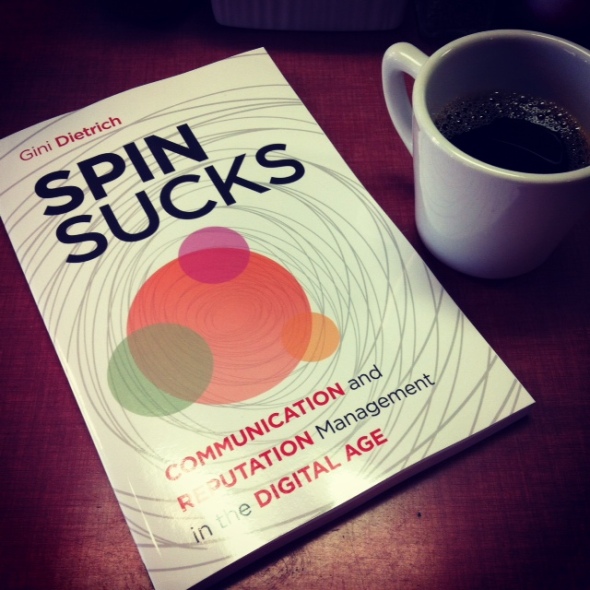12 key steps that will make your content marketing program stand out
Posted: May 29, 2018 Filed under: Uncategorized Leave a comment
Really great content grabs attention, delivers value to audiences, and measurably nudges prospective customers on their journey to buying – and remaining a customer.
It’s been years since content strategy was a secret weapon practiced only by marketing innovators, and mainstream marketers are doing a great job of it these days.
As a content marketer and marketing communicator myself, some top-notch examples have grabbed my attention in the past year.
I’d like to highlight twelve best practices illustrated in a few campaigns that you can adapt to your own content marketing program.
Kesha repositions herself as an inspiring feminist singer-songwriter
A raucous young singer of party anthems in the early 2010s, Kesha eventually became embroiled in a very adult scandal with her former record producer, but she used strategic content to position her next album release as a triumph over it.
In October, 2014, Kesha alleged that her former Sony producer, Dr. Luke, abused her and she should thus be freed from her record contract, but courts ruled in favor of her record label, saying she must continue to work with his label for the duration of her contract.
This spurred public outcry and Kesha fell silent for quite a while.
In planning her comeback after a couple of years, her team employed an innovative strategy of releasing singles weekly via letters from Kesha placed in influential publications to build momentum toward the full album release.
But the weekly missives and releases didn’t just build momentum – they also repositioned Kesha as a now-matured artist and feminist leader.
The bylines (the first of which was placed in the feminist publication Lenny) were personal and inspirational, and positioned Kesha as a singer-songwriter who wants to heal the world through music, instead of simply creating just party music.
I wrote a case study about this brilliant campaign for the influential marketing communications blog Spin Sucks (read it here).
Key takeaways
- When planning earned media placements, consider each outlet’s brand attributes and pitch your content to targets who are aligned with attributes you want to align your brand with.
- Highlight the authenticity behind your brand whenever possible – be brave and honest about your brand from the get-go so you don’t have to reposition later.
- Place more first-person content as you tell your brand story.
Nice content strategy served by cloud CX company Nice
One winter morning I was surfing YouTube and was served an ad featuring an experiment by the Mythbusters, those guys on TV who use science to test the truth and reality of common myths.
It appeared to be an ad for a customer experience cloud solution, CXOne by a company called Nice, which was surprising to me.
The spot was unexpected and engaging enough to get me to click through to the campaign’s landing page and watch a bunch more of the video series.
It turned out the campaign employs a bit of irony in addition to humor – it’s ironic to use material science experiments to test something as ethereal and conceptual as customer experience and the cloud.
Now, this type of series is not necessarily completely original. We can link the strategy back to the now-iconic “Will it Blend” series by Blendtec.
But it works!
Key takeaways
- Use paid content to grab eyeballs, then pull viewers to a landing page with more of the same type of content to offer more value.
- Don’t be afraid to use humor and irony in your content – just use it well.
- Celebrities involved in your campaigns will always grab attention, even if they are a surprising and unexpected match for the brand.
RuPaul’s podcast finishes first – as do its sponsors
I recently started listening to RuPaul What’s the Tee? with Michelle Visage, and I instantly became hooked.
RuPaul and Michelle are great friends, and they manage to make listeners feel like part of the conversation as they discuss a wide range of topics from political to personal and interview celebrities.
Not only does this podcast content support the flagship RuPaul brand, but it also adds richness to the RuPaul’s Drag Race universe.
Another huge success ensconced in the main content is the native advertising ordered by sponsors such as Squarespace, Casper, Audible and Wealthfront.
What’s so engaging about these native ads is that Ru and Michelle continue to add value during the host-read sponsored content, telling stories about how they use the products in their lives and almost seamlessly maintaining their familiar, “just between us girls” tone throughout.
The Squarespace segments even include letters written in by people who have taken advantage of the promotions offering discounts on advertisers’ services.
Beyond that, the ads employ the clever tactic of adding a tracking string onto the sponsor’s site address in order for listeners to receive the promotional discounts, so advertisers and the show organizers can track engagement and sales.
Key takeaways
- Add value in your sponsored content. Be honest with yourself – does your native advertising truly blend?
- Measure, measure, measure! Track results any way you can.
- Again, strive for authenticity in your content.
No boring in B2B — Concur top-of-funnel content fuels demand generation
One of my favorite duties when I was at Concur was serving as the voice for efficiency and integration across channels in PR content creation.
A couple of years ago, the analyst relations team sponsored a report that described a maturity model of travel and expense management solutions – how companies progress from using spreadsheets to using a cloud solution like Concur.
I saw the opportunity to adapt the model into a map where prospective customers could trace their own journey and determine their own level of maturity.
We created a static infographic out of the analyst relations content, placed it in a post in the Newsroom, and promoted it via social, achieving page views and click throughs.
My team’s goal was top-of-funnel awareness, but I saw more opportunity and collaborated with field marketers to turn the static content into an interactive quiz that Concur could use in demand generation campaigns.
The analyst content, static infographic on the Newsroom and interactive quiz were all created from the same core content and succeeded in reaching audiences at multiple stages in the buyer’s journey.
Key takeaways
- Adapt core content for multiple channels across the buyer’s journey.
- Increase collaboration between marketing functions to create a more consistent experience for customers on their journey to purchase.
- Remain curious and creative – something that may seem dry, like analyst content, can come to life and engage new audiences with a little work.
How to rock your first marketing job – what they don’t teach you in school
Posted: May 20, 2018 Filed under: Uncategorized Leave a comment
Marketing majors graduate with working knowledge of marketing strategy and tactics.
But marketing in practice is a bit different from what you learn in school.
If you want to get a leg up on other candidates for marketing jobs and excel once you’re on the team, consider focusing on these areas in preparation for your job search.
And hey, even some seasoned marketers will benefit from looking back at this list as well.
Define your career path within the marketing landscape
It’s one thing to know you want to be a marketer and connect people to things that make their lives better, like I do. The next step is to understand the complexity of how that gets done in the real world, and where you will fit best.
The general population seems to equate marketing with advertising, publicity and mailbox coupons.
And they’re technically correct – ads, PR and coupons are marketing – but there is so much more to marketing beyond those three customer-facing channels. (Yes, marketing has its own PR problem.)
Depending on the size of an organization, there may be one person who handles all aspects of marketing in one role. In larger organizations, there will be people who specialize and work on influencing people at different stages of the buyer’s journey.
You’ll find people who work on corporate communications, pricing, servicescape, brand, product marketing, regional marketing, partner marketing, channel marketing … the list goes on. There is also internal marketing and talent and employer brand marketing. Each role has a different set of skills that lead to success.
Marketers have the opportunity to settle into roles that match their skills and interests. You can excel as an integrated marketing communications generalist or you can specialize in pricing. It’s up to you to decide.
Your to-do list:
- Learn about buyer’s journey and sales funnel models, and think about which stage you would like to work on.
- Connect with marketing professionals in different roles and learn about how their companies’ marketing teams are organized. Ask what makes people successful in the different roles.
- Read up on blogs focused on different areas of marketing.
Communicate like a professional
Even if you work in an area other than marketing communications, you need to be able to communicate, persuade and sell ideas.
The basics you learn in school combined with your fresh perspectives can help you come up with a truly great idea, but if you can’t pitch it to your boss – and give her the tools to pitch it to her boss in turn – it will never see the light of day.
Marketers love presentations. Again, maybe you achieve truly stellar results, but if you just slap stats on an ugly slide that is hard to read, you may not get the credit you deserve. Being skilled in developing slides and decks will make you desirable immediately.
Your to-do list:
- Always, always, always consider your audience first – always. What do they need to know and how do they need to hear it? The higher up people sit in the corporate hierarchy, the shorter and more concise emails need to be.
- Become an expert at building presentations. The same rule about hierarchy applies – the more senior the audience, the shorter and more concise the presentation should be. Offer up details and supporting data in an appendix.
- Get comfortable with presenting. Consider joining Toastmasters.
Work well with others
Most schools have caught on to the reality that business is basically one big group project and are including group work in most marketing classes.
In the real world, you have to decide how to achieve results and shine as an individual while getting buy-in from of a diverse group of teammates and inspiring productivity from others.
Your to-do list:
- Build and exercise your emotional intelligence.
- Develop an attitude of curiosity with regard to feedback. Practice accepting negative feedback – you can’t grow without it.
- Build relationships with coworkers.
Manage your time
What you quickly learn when you start working is that many organizations spend a lot – and I mean A LOT – of time talking about things and leaving very little time for executing. Your day may end up being 80-90% meetings, and you’ll be expected to execute whenever you’re not in a conference room or on a call. And then you’ll have to get approval from people who are in meetings 120% of the work day.
Your to-do list:
- Think about when you are most productive. Are you a morning person or an evening person? You may not have much freedom to schedule your own meetings at first, but you can get up early to get a leg up on the day or come in later so you can work at night.
- Find and use productivity tools that work for you. Do you like keeping a physical notebook with to-do lists? Spreadsheets? Project management apps like Asana?
Collect experiences to grow your career
You may love your job today, but it’s important to remember that it will not last forever.
Obviously you’ll want to grow at your company – and position yourself to land a great job once you leave. To do this, take advantage of every opportunity to expand your skill set. Become a project management expert while you have the chance – it will serve you well in any role you land. If your boss wants you to do a project on an area outside your job description, say yes (within reason) and rock it. It could lead you in a direction you will love.
Your to-do list:
- Constantly collect experience for your resume. Focus on being able to report great results using statistics, and set yourself up to be able to describe how you recognized a problem, devised appropriate strategy and tactics, and achieved results.
- Position yourself to be able to link your work directly to results. Ideally you will lead projects on your own, but at the very least keep track of the influence of your work.
- Keep networking! Build relationships with people around your company. Keep up with your friends from school and engage in professional development groups. Meetup.com and your favorite social media watering holes will serve you well.
Help others
Finally, share your knowledge and help whomever you can. Lifting others is a great way to help yourself as well. Be active in your school’s alumni groups. When people try to connect with you asking for advice or for introductions within your company, help them out. Cultivate and maintain humility, and always remember that today’s intern is tomorrow’s CEO.
Marketing is a force for good in the world – my marketing manifesto
Posted: May 12, 2018 Filed under: being human, marketing 1 Comment
I believe marketing is a force for good in the world.
Marketing as a discipline has a pretty bad PR problem, though. People love to hate marketers.
And it’s completely understandable. Years and years of bad marketing have convinced people that marketers are just out to raid their pockets.
That’s not necessarily the case.
Marketing connects you to things that make your life better.
Essentially, marketers help you solve problems and meet needs.
Marketers dream up products and services and determine what price the market will support. Marketers get solutions in front of you when you are trying to solve problems or find joy. And the branding side of marketing ties products to companies so they can be held liable for damages if anything goes wrong.
But there is a lot of very bad marketing out there.
Poorly targeted, interruptive ads remain exquisitely painful, especially on the internet. On the flip side of that, hyper-targeted ads based on deep data make some people even more uncomfortable.
So naturally people judge all of marketing by the worst of its practitioners, even though they may not perceive the positive influence marketing has on their lives, on companies and on the market.
But here is the thing.
If we commit to doing good marketing, we have a chance to repair marketing’s reputation.
With that in mind, I’d like to share with you my vision for developing truly good marketing programs that achieve results.
This is my marketing manifesto.
- Marketing is a force for good in the world.
- Good marketing puts the customer and audiences first.
- Good marketing honors the public’s trust.
- Silos equal death for good marketing. Integration is life.
- Too many cooks in the kitchen kill good marketing.
- Too many chefs but not enough cooks in the kitchen kill good marketing.
- Good marketing links every single tactic to a specific goal and strategy.
- Good marketing is highly targeted.
- Good marketing communications are based in action.
- Good marketing takes advantage of primary research at all levels.
- There is no boring in B2B.
If marketers adapt these concepts, we have a chance to build a better relationship with the general public that will result in increased trust in our messages, and more success for the companies we represent.
Audacious and authentic — a case study of Kesha’s strategic launch communications
Posted: August 30, 2017 Filed under: marketing, PR, Uncategorized 2 CommentsWhen strategic marketing communications get great results, whether the results are in changes in perceptions, increases in sales, or both, my heart sings.
And we witnessed a great example of that this summer as Kesha launched her new album.
Read my case study of her team’s work here.
And here is a huge thank you to Gini Dietrich and Laura Petrolino at Spin Sucks for accepting my guest post.
To find your purpose, just be yourself and let your flower bloom
Posted: July 29, 2017 Filed under: Uncategorized 5 Comments What if I told you that all you have to do to reach your ultimate expression as a human being is let yourself bloom, just like a flower?
What if I told you that all you have to do to reach your ultimate expression as a human being is let yourself bloom, just like a flower?
Recently I had the distinct joy of attending an ARTS Anonymous meeting with exceptional artists in Joshua Tree, CA. It happens each Tuesday at 5pm at Art Queen, if you find yourself in the desert. In the course of our sharing, we discussed our long-term goals. Unwittingly, I had been formulating my response all morning, and it emerged unexpectedly (and perhaps uncharacteristically succinctly) from my mouth in the moment as:
TO REACH MY FULL EXPRESSION
The simplicity of it surprised me. I had heard the term “full expression” before from my yoga teacher Patricia in reference to asanas. But earlier in the day I had been thinking about who I am, who I really yearn to be, and whether I am using my time on Earth in the best way I can to get there. Am I doing what truly makes me happy and what truly aligns with my talents and abilities … and purpose? Am I really being the true and authentic Dwayne?
And that’s when I had a vision of a flower.
I realized that our expressions of ourselves as humans are like flowers. By “full expression” I mean our ultimate behavior, and maybe the things we produce or contemplate and discuss … what we are. They are ultimate, cumulative, natural, and beautiful. And inevitable — the instructions are coded in our DNA and energy. In some ways, all we have to do is turn ourselves over to that directive and it will simply be.
In fact, we can’t really be anything else, even if we try. Our souls know what we are meant to do, and will nudge us in that direction when we are heading somewhere else.
And of course, as Shari Elf mentioned while we were talking after the meeting, flowers need the right conditions to grow in – the right soil, water, light and air. And our full human expressions need similar nurturing as well in the form of the right environment, media and thought patterns.
In fact, ARTS Anonymous teaches that if you spend just five minutes a day working in your art, you give your full artistic expression opportunity to take root. It stands to reason that if you spend just five minutes a day doing things you feel are leading you to your ultimate expression, it will grow.
And it’s never too late. I once heard a story about how ancient date seeds found by archaeologists sprang to life when planted. Their ultimate expression lay dormant for thousands of years, but creeped to the surface as soon as the right conditions were present for growth. (Thanks to Deb Mynar for finding the linked article above.)
Human expressions are like those ancient viable seeds, too. So many of us spend a lot of time sabotaging ourselves, clipping the shoots that will become the flowers of our ultimate expressions, diverting all our energy toward other paths. We use sex, drugs and alcohol to numb ourselves. We engage in negative thinking to draw boundaries around ourselves and avoid the truth that we are all interconnected and one. We put things off thinking we just have to work for another year or two in that job that gives us no intrinsic rewards, that in fact makes us feel worse about ourselves, because we need money to participate in the system of consumption we live in.
But as soon as we nourish ourselves with the right environment and people, the right media and the right thought patterns, and maybe even the right discipline, our full expressions begin to blossom.
Of course then another question arises – what does it feel like to reach your full expression? Does another bud form and another expression evolve? What do you think? And what do you need to do today to discover and nourish yours?
Finding happiness and living your story: a daily checklist
Posted: September 28, 2014 Filed under: Uncategorized 4 Comments
Just like life — every day can reflect your entire life story. Photo via: https://www.flickr.com/photos/stevewall/1361325457/
It has been quite a year of transition for me. I finished my marketing degree, extended my work at Concur and moved into my own apartment in Oakland. Those are all fantastic developments! Of course, this welcome lull in intense demands on my energy has afforded me time to focus on higher-order needs again.
Lately I have been thinking about what the perfect day looks like for me. I’ve been thinking about balance and how an excess of any one thing quickly chips away at feelings of happiness and contentedness. For example, if I work constantly for several days, I crave Read the rest of this entry »
Career changes are GOOD news in the new economy: 3 ways to make an easy transition
Posted: March 26, 2014 Filed under: Uncategorized 6 Comments
i love/like my job found via http://farm8.staticflickr.com/7199/6820378862_0c3a2ce631_o.jpg
Are you happy in your career? Have you ever felt like maybe you wanted to follow another star toward more happiness in your work life?
Today I was watching a live video chat featuring Porter Gale and DJ Waldow from Marketo. The talk was mostly about technology and how it is changing the marketing landscape, but Porter said something else about working and careers that really resonated with me. She said that as a marketer you have to ask yourself if you are really passionate about the product or service you are offering. If you don’t feel passion, she said, it’s time to take a step back and think if you need to be working on something else, because you need that passion to fuel the best work possible. Read the rest of this entry »
Commitment to customer experience: true leaders make us all part of the team
Posted: October 16, 2013 Filed under: marketing | Tags: Customer experience, Customer service, leadership, servant leadership 1 CommentI’ve been thinking a lot lately about how customer experience is the driving force behind many decisions that I admire … decisions that drive success for companies.
Some obvious examples are the obsession with design that Steve Jobs leveraged in crafting every interaction customers experience with Apple, and Tony Hsieh’s innovative hiring practices that ensure every Zappos employee lives to deliver memorable customer service.
But it’s not just these big, glamorous examples — you can find Read the rest of this entry »







